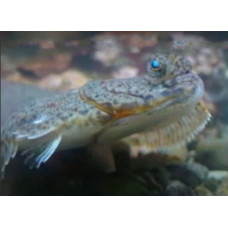Latin name
Hippoglossoides platessoides
Other names
American sole, long rough dab.
Identification
It has a slender body and a large mouth. The ocular side is covered with ctenoid scales that are rough to the touch. The eyes are on the right side of the body and separated by a narrow interorbital space covered with scales. The lateral line is nearly straight. Males smaller than females. There are 8 gill rays. There are 10-13 stamens on the lower part of the 1st gill ray.
Features of fish fins
Dorsal fin begins above the left eye. Caudal fin straight with slightly prominent marginal rays. The profile of the posterior half of the dorsal and anal fins is almost straight or slightly convex. The posterior edge of the caudal fin is not rounded, with the central rays projecting posteriorly to form a blunt wedge.
Fish colouring
Eye side greyish brown with indistinct dark spots, blind side bluish white.
Distribution
Western Atlantic: from southern Labrador in Canada and western Greenland to Rhode Island in the USA. Eastern Atlantic: from eastern Greenland and the English Channel to the coast of Murmansk.
Habitat
A marine, bottom-dwelling, oceanodromous species. Occupies soft bottoms at depths from 10 to 3,000 m (33-9,843 ft), but mostly between 90 and 250 m (300-820 ft). Prefer temperate climates.
Size
Grow to a maximum length of 70 centimetres (28 inches). Maximum declared weight: 6.4 kilograms. Maximum stated age: 30 years.
Behavior
Small immature individuals do not appear to make regular migrations, while adults from the eastern and central Barents Sea move from the eastern and central Barents Sea to the western regions to breed, after which they disperse east and north again in summer.
Food and feeding habits
It feeds on invertebrates and small fish.
Reproduction
Spawning takes place mainly in the open sea in March-June at a depth of 125-200m at a temperature of 1-3°C. Fecundity is 242-366 thousand eggs (3 females 48-49 cm long). Diameter of pelagic eggs in the North Sea 1.4-2.6 mm, in more northern areas (Barents Sea, Iceland) 2.6-3.3 mm. Juveniles settle to the bottom when about 3 cm long.
Fishing
This species is not usually caught by fishermen, but is often part of the by-catch.
Relationship with a person
It is consumed as food and sold fresh and frozen.
Interesting Facts
It is not uncommon to find American plaice that are blind from birth. These fish do not die as a result; they remain well-nourished and live to a ripe old age. This further confirms the significant role the lateral line plays in their lives.
| Classification | |
| Phylum | Chordata |
| Class | Actinopterygii |
| Squad | Pleuronectiformes |
| Family | Pleuronectidae |
| Genus | Hippoglossoides |
| Species | H. platessoides |
| Features | |
| Conservation status | Endangered |
| Habitat | Bottom |
| Life span, years | 30 |
| Maximum body weight, kg | 6,4 |
| Maximum length, cm | 70 |
| Sailing speed, m/s | No information |
| Threat to people | Edible |
| Way of eating | Predator |
American plaice
Tags: american plaice


